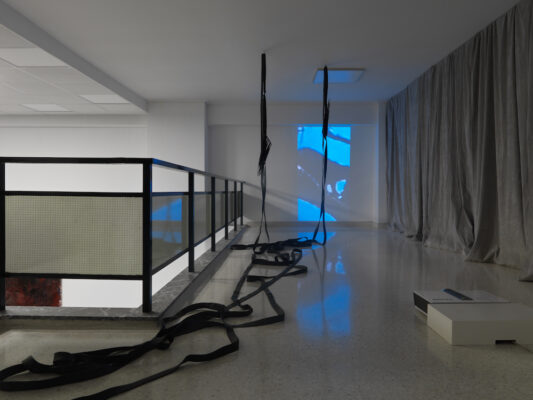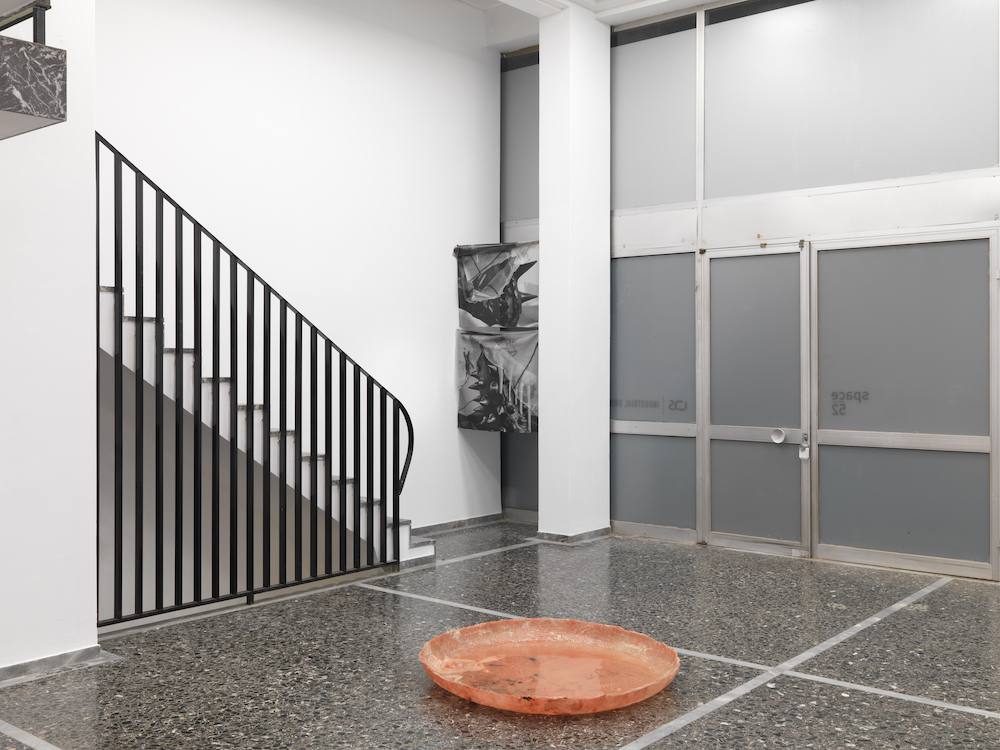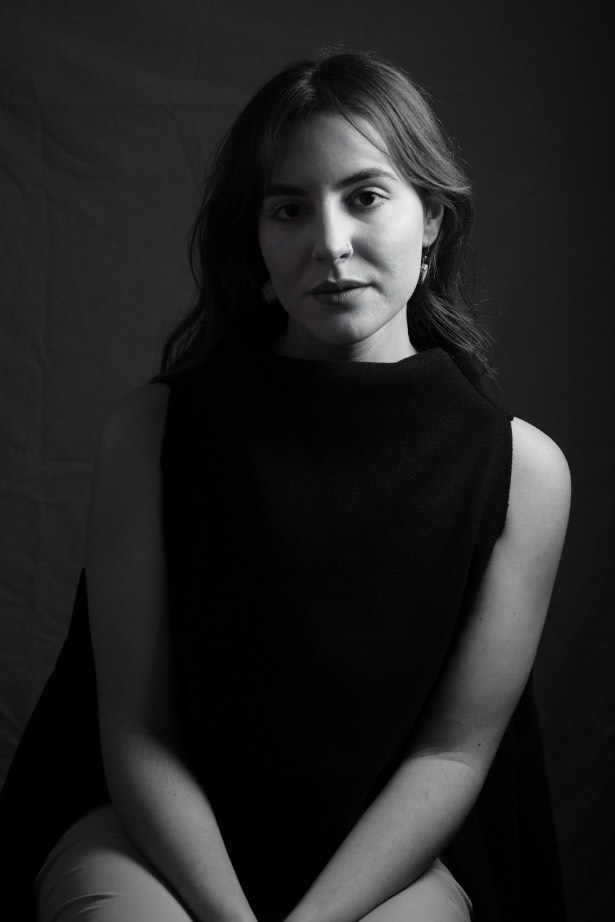Search
To search for an exact match, type the word or phrase you want in quotation marks.
A*DESK has been offering since 2002 contents about criticism and contemporary art. A*DESK has become consolidated thanks to all those who have believed in the project, all those who have followed us, debating, participating and collaborating. Many people have collaborated with A*DESK, and continue to do so. Their efforts, knowledge and belief in the project are what make it grow internationally. At A*DESK we have also generated work for over one hundred professionals in culture, from small collaborations with reviews and classes, to more prolonged and intense collaborations.
At A*DESK we believe in the need for free and universal access to culture and knowledge. We want to carry on being independent, remaining open to more ideas and opinions. If you believe in A*DESK, we need your backing to be able to continue. You can now participate in the project by supporting it. You can choose how much you want to contribute to the project.
You can decide how much you want to bring to the project.

“No Self Control,” curated by Dinos Chatzirafailidis at Space52 in Athens until December 2nd, challenges conventional notions of spectatorship, fostering a psychosomatic connection between viewers and diverse artworks. Influenced by feminist contributions to trauma studies, the exhibition explores the in-between state of intimacy and inaccessibility. Featuring artists like Dafni Atha, Katerina Komianou, Cecilie Skov, Leontios Toumpouris, Corinna Triantafyllidis and spaniard Carlos Zorromono., the show transcends binary oppositions. In an interview with the curator, we delve into the exhibition’s conceptual framework and his innovative curatorial approach.
Can you elaborate on the conceptual framework of “No Self Control” and how it aims to transcend binary oppositions, specifically exploring the in-between state that resonates with both the self and that which appears threatening?
The exhibition navigates the intricacies of human experiences, while purposefully obscuring the lines of traditional binary oppositions. This nuanced exploration seeks to uncover liminal spaces where clear identification and categorization become elusive. A striking example of this can be found in Proliferation I (2020) by Dafni Atha, a large-scale sculptural painting that seamlessly merges elements from different artistic mediums, embodying this blurring of boundaries and exemplifying the dissolution of conventional artistic distinctions.
In his Soft as a Thorn (2022-23) series, Carlos Zorromono confronts unsustainable systems and explores compelling contrasts. By juxtaposing vulnerability and resilience, he constructs a visual narrative that explores the interplay of opposing forces within the human condition and ventures into the complex spaces that exist in between these stark dichotomies.
In Pore Interlude (2021) by Corinna Triantafyllidis, uncanny portraits resonate on a deeply personal level while simultaneously addressing unsettling aspects of existence, such as the erosion of one’s self-identity and the profound sense of alienation within one’s own self-image. These pieces provoke discomfort and introspection, mirroring the viewer’s own inner conflicts.
How did you select the participating artists for this exhibition, and what criteria did you use to ensure a diverse exploration of the themes related to intimacy, inaccessibility, and the fragility of the subject’s physical integrity?
The selection process of participating artists for No Self Control entailed a delicate balance of thematic relevance, diversity of perspectives, and the inclusion of a wide array of artistic practices. The themes of intimacy, inaccessibility, and the fragility of the subject’s physical integrity are highly introspective and can be experienced in unique ways by different individuals. To capture this diversity of experience, I brought together a group of artists from varied backgrounds and artistic approaches. This allowed for a broader and more inclusive exploration, shedding light on these topics from different angles.
I prioritized the inclusion of artists who not only demonstrate exceptional skill but also exhibit, either directly or indirectly, a profound engagement with the chosen themes and central ideas. The collective presentation of the works was crafted to tell a coherent narrative. As a result, all the artworks strive to evoke a somatic response, mobilizing both cognitive and psychic processes in confrontation with charged components within the exhibition.

The exhibition seems to challenge traditional notions of spectatorship by encouraging viewers to engage with the artworks on a more subjective and affective level. Could you share more about your curatorial approach in fostering this unique viewer-artwork relationship? Your curatorial statement references feminist contributions to trauma studies by authors such as Jill Bennett, Griselda Pollock, and Bracha L. Ettinger. How have these contributions influenced the curation, and in what ways do you see their theories manifesting in the exhibition?
The exhibition takes a deliberate approach to challenge conventional notions of spectatorship, inviting viewers to engage with artworks on a deeper, more affective level. The selected themes often elicit complex emotional responses, and in order to foster an intimate connection between the viewer and the exhibited art, I drew upon valuable insights from feminist contributions to trauma studies. All of the three mentioned scholars emphasize the significance of subjective interpretation, empathy, and self-reflection when confronting trauma. Their interdisciplinary approach, spanning fields such as psychoanalysis, art history, and feminist theory, formed the foundation for a comprehensive understanding of trauma and its impact on human nature.
This perspective enabled me to critically assess and engage with experiential curatorial forms, shifting from an audience-oriented model to one where the viewer becomes an empowered protagonist. This type of holistic and relational approach moves away from the purely informational and representational- No Self Control seeks to treat the viewer as a spatial agent, acknowledging their multidimensional nature and sentient qualities.

Your curatorial statement mentions some artworks creating a dialogue between the viewer’s body and the materiality of the object, affecting the spectator on a psychosomatic level. Can you provide examples of specific works in the exhibition that tap into the characteristics of materials, instigating a profound connection to the viewer’s living form?
Cecilie Skov’s selection of materials with organic qualities, including leaves, flowers, straws and fennel seeds engenders a deep resonance with the viewer’s living form. They convey a sense of preserved life, serving as a testament to the tangible and functional aspects of the human body. At the same time, her piece Spoon Spoon (2022), forges uncanny bodily associations, acting as a symbolic substitute for the human body – an inverted, disrupted form that conjures the image of the late twentieth-century pathological and fragmented body that was subject of clinical scrutiny and dissection.
Katerina Komianou’s Untitled II (2023) magnifies the interplay between inner bodily sensations and the external world on a substantial scale, intensifying the mental-physical connection. As a result, the viewer may experience difficulty in locating their own body in relation to the sculpture.
Leontios Toumpouris’ intimate relationship with the materials he employs extends beyond the visual, forging a link that taps into the viewer’s very essence. The fused glass in Hallucinations and tempi #4 (2022) bears visible marks of transformation and fragility, invoking vulnerability and transience.
Given your diverse experience in curating exhibitions at institutions like MoMA and Gagosian, as well as independent art spaces, how has your past experience informed your curatorial approach for “No Self Control”? Additionally, could you share any themes or concepts that you are particularly interested in exploring in your future curatorial projects?
Having worked in diverse settings and interacted with numerous creatives, my ideas evolved and this has also informed my practice and strengthened my perspective on art and curatorial storytelling. My MA and PhD studies honed my focus on affect theory and psychoanalytic aesthetics, which proved to be powerful tools for understanding the psychological dimension of art, a key element explored in No Self Control.
The exhibition marks the third installment in a series of curatorial projects that I’ve undertaken, all of which share a common thread of exploring experimental modes of affective exhibition-making. These projects delve into themes related to the subjectivity of horror and draw inspiration from similar concepts, such as the uncanny, the abject, ostranenie, and the sublime. These themes have provided a rich terrain for exploring the human psyche and the myriad ways in which art can provoke emotional responses. Thus, for my future curatorial projects, I am unwavering in my commitment to this examination of affect theory and its intersection with curating. I am excited to continue pushing the boundaries of conventional exhibition-making, seeking new ways to engage both specialist and general audiences.

Can you describe your experience collaborating with the Athens-based artist-run space Space52?
My collaboration with Space52 proved to be a truly fulfilling and smooth experience, marked by seamless coordination. It provided me with an exceptional platform to showcase my curatorial work, as well as a rich array of artworks contributed by the artists I invited to participate. I appreciate the invaluable support and creative freedom that Space52 extended to me throughout the project. The founder of the space, Dionisis Christofilogiannis, displayed remarkable openness to explore various possibilities, and his professionalism and collaborative approach simplified the entire process. The space itself exudes a unique aesthetic, with characteristic architectural lines. The synergy between the venue and the art felt organic and I hope that there will be more opportunities to team up with Space52 in the future.
All installation views courtesy of Space52 © Stathis Mamalakis.
“No Self Control” runs from 3/11 till 2/12 at Space52
Space52 is an independent art space managed by artists in Athens, Greece.

Katerina Milesi (b. 1999) lives and works in Athens. She studies Art History and Biology, while she engages in various roles as a freelance curator, researcher, designer, and project coordinator. Her collaborations predominantly gravitate towards artist-run initiatives and spaces. Over the past two years, Katerina has been collaborating with entities such as space52, the Gallery of the American College of Greece and various independent artists. Currently, she is involved in artistic project of “Eleonas ‘23- Cthonic and Anthropocene”, collaborating with Dimitris Trikas, as well as the ACG Gallery, serving as an assistant curator, coordinator and researcher.
"A desk is a dangerous place from which to watch the world" (John Le Carré)